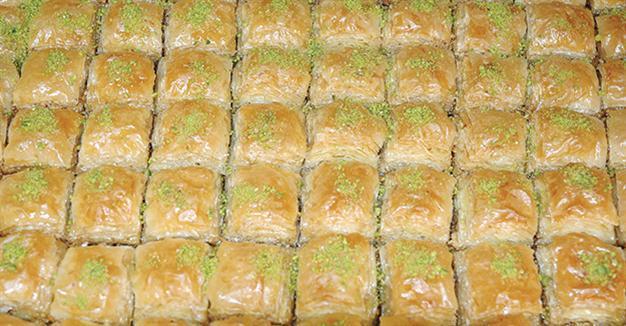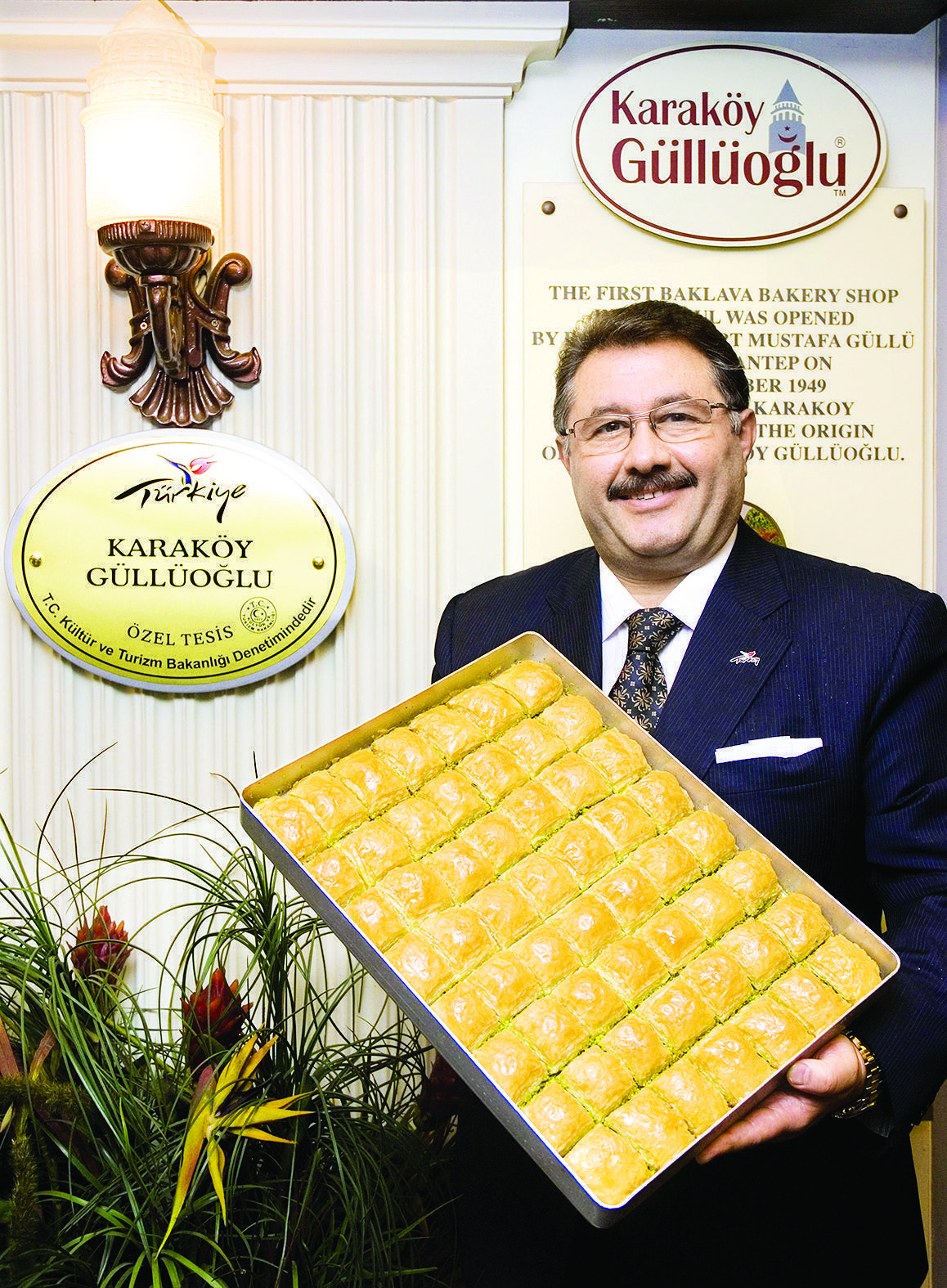Baklava, the favorite pastry for Turkish feasts
ISTANBUL – Anadolu Agency
 The cuisine of Turkey’s southeastern province of Gaziantep earned praise in December 2015, as it was added to UNESCO’s list of “The Creative Cities Network” on gastronomy, a network that launched in 2004 and comprises 116 cities worldwide.
The cuisine of Turkey’s southeastern province of Gaziantep earned praise in December 2015, as it was added to UNESCO’s list of “The Creative Cities Network” on gastronomy, a network that launched in 2004 and comprises 116 cities worldwide.Among the ancient city’s premiere delicacies, one finds the filo-dough treats known as baklavas.
 Indeed, around 1,100 km away from Istanbul, is the capital of the flaky dessert.
Indeed, around 1,100 km away from Istanbul, is the capital of the flaky dessert.Characteristic of the former Ottoman Empire cuisine, baklava is rich, sweet, with layers of filo pastry filled with nuts and syrup.
The pastry is one of the most popular sweets in Turkey, as well as in the Middle East and Balkan countries, and seduces locals and tourists alike.
The famous Karaköy Güllüoğlu is a baklava bakery run by the Güllü family from Gaziantep, like most baklava producers in the country.
The 300-square-meter baklava bakery, which opened in 1949, sells almost three tons of baklavas during religious festivals or New Year’s Eve, said Hasan Akbıyık, 62, a salesman for Karaköy Güllüoğlu.
According to an Istanbul-based association on baklava and dessert production, Baktad, Turkey produces around 950 tons of baklavas daily.
The average annual baklava consumption per person is around 4.4 kg, Baktad said in a statement.
The industry employs more than 60,000 people at around 25,000 companies across Turkey and makes an annual domestic turnover of around 8.5 billion Turkish Liras ($2.9 billion).
While the industry’s exports of baklava amounted to $1 million in 2005, it increased to more than $4 million in 2014, Baktad added.
Turkey mainly exports baklava to the U.S., Germany and Saudi Arabia, Baktad said.

How to make baklava
The chairman of Karaköy Güllüoğlu, and also a baklava maker for more than 40 years, Nadir Güllü, 60, explained the key steps in making baklava.
He said that ingredients for Gaziantep baklava, which received protected status from the European Union in 2013, should be grown locally during the right seasons.
Pistachios, “the main source of the good taste of baklava,” he said, should be picked in Gaziantep in August when the protein levels are higher, rather than in September, when they are usually harvested.
“Walnuts should be brought from [the northern province of] Tokat during September and October,” he added.
And the butter for a baklava should be made from the milk of sheep and goats that are fed untrodden herbs of the Harran Plain in southeastern Turkey.
“The animals should be eating those herbs during the spring months of April and May,” he said.
While the flour for baklava should come from Turkey’s central Anatolian province of Konya or southeastern Şanlıurfa, Gullu said the water used for baklava should not be chlorinated.
Güllü has a very definite idea of what a good baklava should be.
“First of all, it should be gold in color,” he said. “Secondly, when you smell it, you should be able to understand if the ingredients are natural or not. Third, when you put your fork into the baklava you should hear the crispy voice which shows how thin the 40 layers of rolled dough are.”
Lastly, one should chew the baklava slice five times in order to understand the pistachio aroma, he added.
The Karaköy Güllüoğlu bakery attracts around 3,000 people on an ordinary day. This number increases to 6,000 on the weekends, said Akbıyık, one of its salesman.
Baklava is also one of the main souvenirs that Turks or foreigners bring back to their friends and family.
One of the customers in the bakery was Chloe Marie, 38, a social worker from Switzerland who was in Istanbul for a five-day holiday.
Her first taste of a baklava was in her home country years ago. “I just love them,” she said, adding that each time she is in Istanbul she tries the filo-based sweets.
















